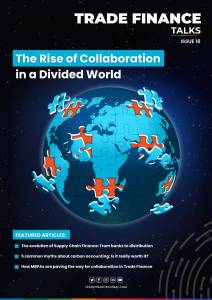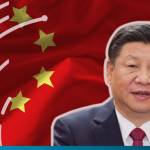Estimated reading time: 5 minutes
Advanced Payables
The above Supply Chain Finance techniques have been defined by the Global Supply Chain Finance Forum (BAFT, EBA, FCI, ICC and ITFA)
The financial landscape has undergone a seismic shift in recent years. From zero or negative interest rates to the COVID-19 pandemic and geopolitical tensions, the world has seen it all. Amidst this backdrop, the role of private credit has evolved significantly.
The question now is, has trade and receivables finance become the new home for private credit?
The shifting landscape
Two years ago, treasurers and financial directors were scrambling to find investment avenues that could yield returns, as traditional deposits were offering zero or even negative interest rates.
Fast forward to today, and the scenario has changed dramatically. The influx of cheap capital from zero-bound rates and pandemic-era stimulus led to a looser investment standard. The industry knew this would not last, and recent market trends have shown this era has ended.
Rising inflation, stemming from the quantitative easing policies and supply chain problems has led many central banks to increase interest rates.
The US Federal Reserve has set rates at a 22-year high, at 5.25-5.5%, and the Bank of England has set the rates at 5.25%, with expectations of another half-point rise in the future. In August, The Central Bank of the Republic of Türkiye increased rates to 25%.
All of these factors have led to a reasonable concern that the global economies will see varying levels of decline in the next few years.
In other words, this is not a regional shift, it is a major shift in the global market. And this has led to a more cautioned, reasoned approach to investments.
People are now looking for sensible, low-risk avenues to park their capital.
In this evolving landscape, private credit has emerged as a viable option. It involves funding real assets in a world where they are not listed, offering a unique proposition for investors.
At Trade Finance Global (TFG), we have observed a growing interest from institutional capital, particularly in trade and receivables finance.
Trade and receivables finance: A low-risk alternative
Trade and receivables finance lines are typically low-risk, self-liquidating facilities. They involve financing the supply chain, buying at one price and selling at a higher one, typically within a short duration of 90 to 180 days.
We are increasingly starting to see an interest in trade finance as an asset class, and this makes sense given the direction of the market. In our view, this is mainly because pricing tracks underlying rates (which are rising), along with the positive margin component; representing an attractive asset vs. US Treasuries, as an example.
Trade finance as an asset class is highly scalable and offers strong returns. It is not linked to certain market fluctuations but is tied to real, live trades.
This has led to increased interest from mid-market banks and institutional investors looking to diversify their portfolios.
Governments and Export Credit Agencies (ECAs) are also encouraging investments in trade finance to stimulate economic activity. This has led to new players entering the market, who are attracted by the new structures of guarantees that are presenting themselves.
But it isn’t as black and white as simply investing in trade finance.
Trade finance involves a higher level of complexity due to various factors like different jurisdictions, sectors, and more niche topics, like issues of perishability. However, it offers a level of transparency that is often missing in other asset classes. Understanding the specificities of the trade, and demands of borrowers are crucial for determining how they intend to utilise the capital, and where capital is being deployed.
TFG’s evolving role: Introducing TFG Distribution Finance
Historically, TFG has been the largest trade and receivables originator, connecting lenders with buyers, using our deep industry knowledge.
However, the growing demand for capital in the trade and receivables financing space has led us to evolve our role. We saw a gap in the market and realised that it needed a new, innovative solution.
Enter TFG Distribution Finance.
This new project will help build asset books for existing and new funders. This allows us to match the specific requirements of borrowers with the right kind of capital, thereby creating a win-win situation for all parties involved.
Though many people are starting to acknowledge the potential of investing capital into trade finance, it can be a difficult task without a dedicated team. TFG Distribution is the emerging solution to this problem.
Using TFG Distribution Finance, large lenders can put their capital to use without the need to create a dedicated team of trade finance experts. Lenders will see positive returns, and SMEs can access new capital.
Capital requirements: Bridging the gap
One of the biggest challenges in the trade finance market is the mismatch between what capital exists and current demand.
TFG Distribution Finance aims to bridge this gap by understanding the granular requirements of both borrowers and lenders. This is essential for scaling trade and receivables finance and bringing new liquidity into the market.
The economic uncertainties of recent years have led to a renewed focus on sensible, low-risk investments.
Trade and receivables finance offers a promising avenue for private credit, providing scalability, diversification, and a low-risk profile. As TFG continues to evolve, we are committed to bridging the gap between demand and capital requirements, thereby introducing more effective and transparent financing solutions.
In a world where economic stability is far from guaranteed, trade and receivables finance offers a new and promising avenue for private credit. It’s not just about financing goods flowing across borders; it’s about creating a more stable and transparent financial ecosystem for all stakeholders involved.
















































